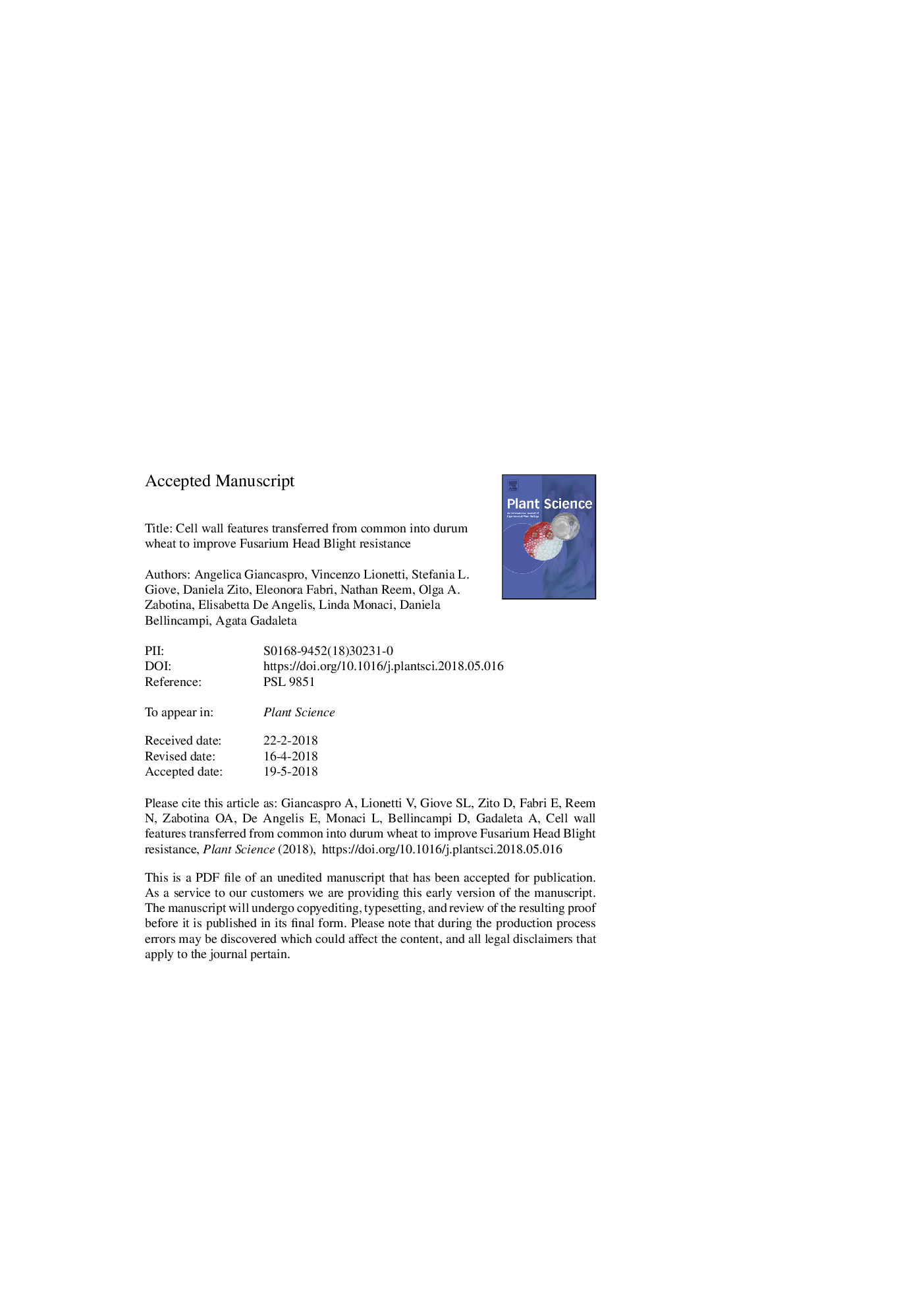| Article ID | Journal | Published Year | Pages | File Type |
|---|---|---|---|---|
| 8356226 | Plant Science | 2018 | 29 Pages |
Abstract
Durum wheat is naturally more susceptible to Fusarium graminerum infection in comparison to common wheat. The improvement of durum wheat resistance against F. graminearum is a challenge due to the lack of resistance sources in its gene pool. FHB-resistance factors were introduced in durum wheat by generating recombinant inbred lines (RILs), obtained by crossing the hexaploid resistant accession 02-5B-318 with the susceptible durum wheat cv. Saragolla. In this work we explored the possible contribution of cell wall (CW) in RILs with improved FHB resistance. We thoroughly studied CW components, mycotoxins content and the expression of related genes in different RILs selected for their extremely high and low resistance to FHB. Differences were found in resistant and susceptible lines in the degree of pectin methylesterification and in deoxynivalenol (DON) accumulation after fungal infection. Genes involved in biochemical modification of CW structure (WheatPme-1, Glu-1) and mycotoxins accumulation (ns-LTP-1) were analyzed as putative candidates for FHB resistance. Our results indicate that durum wheat plants with cell wall structure and gene response acquired from common wheat displayed an increased resistance to FHB.
Keywords
Related Topics
Life Sciences
Agricultural and Biological Sciences
Plant Science
Authors
Angelica Giancaspro, Vincenzo Lionetti, Stefania L. Giove, Daniela Zito, Eleonora Fabri, Nathan Reem, Olga A. Zabotina, Elisabetta De Angelis, Linda Monaci, Daniela Bellincampi, Agata Gadaleta,
